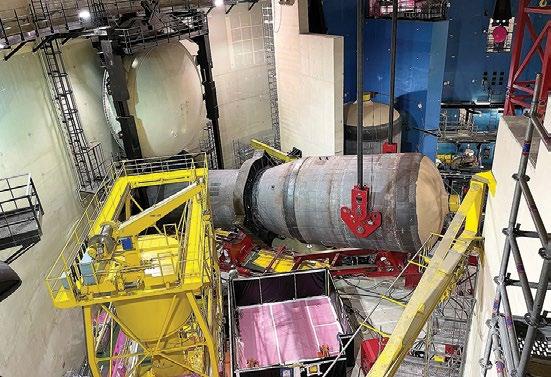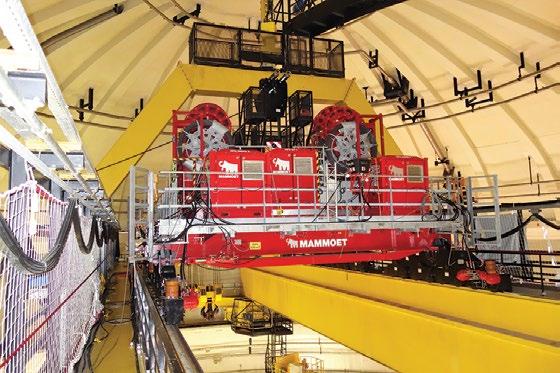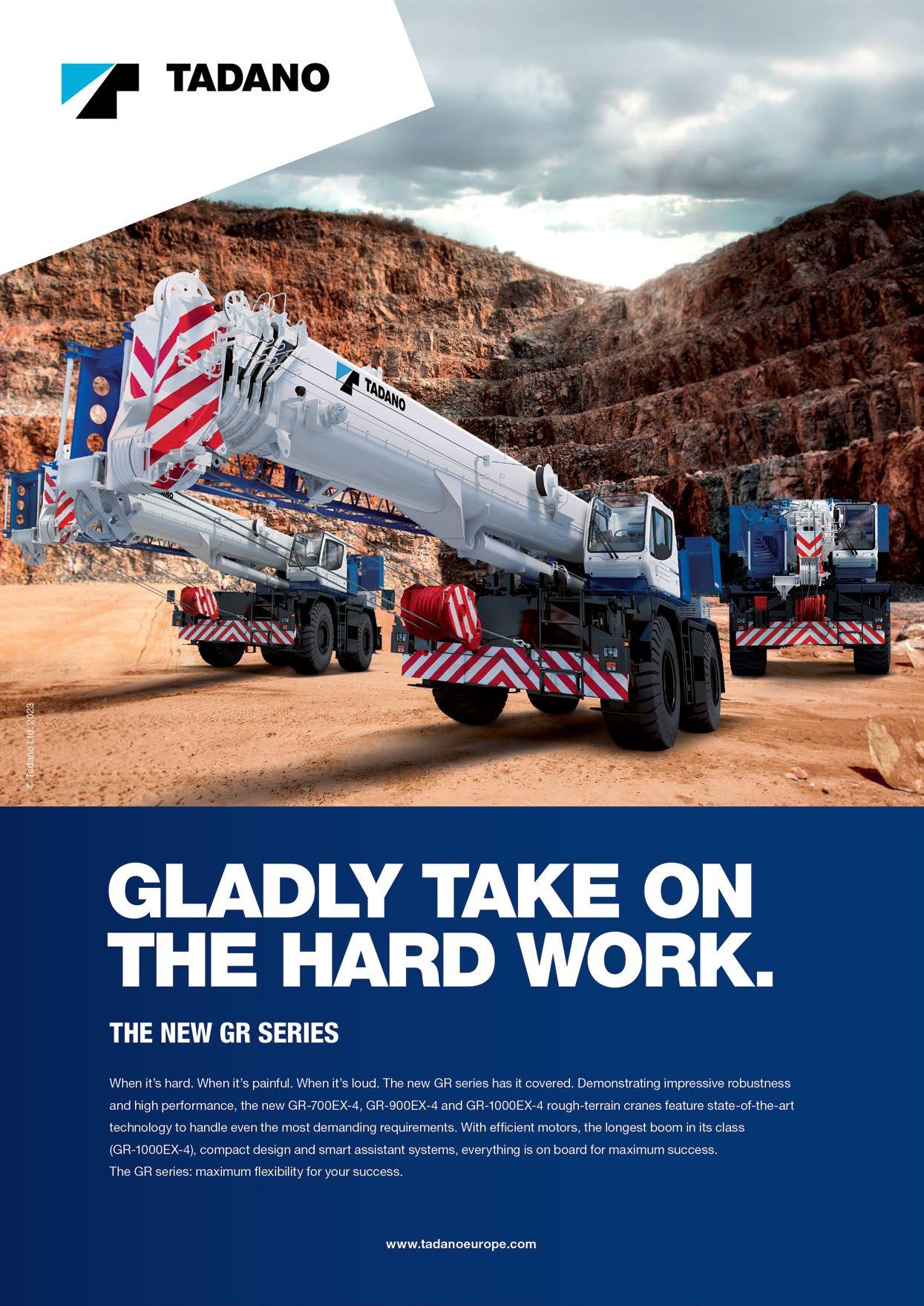
4 minute read
Custom engineered solution
Custom engineered solution

Any work inside a nuclear reactor building has its challenges, but carrying out large scale maintenance and engineering work is another thing particularly as little regard was given at the design stage to the removal of the large and heavy components. Working alongside a nuclear reactor makes meticulously planning and co-ordination essential. Failure to do so leads to substantial penalties and safety risks.

Dutch international heavy lift and transport company Mammoet was approached five years ago by France’s Framatome to assist with the removal and replacement of four steam generators from inside its nuclear power plants. The first project - Flamanville FA1 - has been successfully completed and demonstrated the efficiency of the equipment and procedures designed for the job. The project was led by a combination of Mammoet specialists from France and its main engineering offices in Schiedam, the Netherlands. The steam generators had to be moved out in one piece due to possible contamination and for a shorter downtime for the power plant.
Mammoet designed a specific method to lift each of the 25 metre long, 6.5 metre diameter, 520 tonne generators from their compartments, then carefully rotate and manoeuvre them into a position allowing them to be skidded out of the building and lowered to ground level using a jacking system. They were then transported away for decommissioning. These steps were then reversed for the installation of the new generators.
The polar crane inside the reactor building is normally used for servicing and replacing parts, however it could not cope with the size and weight of the whole generator which was installed in two parts, thus the need to design and build a specific solution to work in concert with it.
Olivier Vanesse, nuclear activities manager and project director at Mammoet France said: “The facilities and infrastructure inside the reactor buildings mean you cannot simply use a basic tailing operation. You need to be able to steer the steam generator, and rotate it. There are a number of steps that need to happen in order to move each of them through the main hatch, it is a really difficult operation.”
“The lifting and tailing operation for a 1300MW nuclear unit is very complex - each generator weighs 520 tonnes, far more than the capacity of the polar crane. Therefore, you need to use a support in the middle of the polar crane to ensure that during the tailing process it has sufficient capacity - constraints and deflections wise.”
As Mammoet had no handling equipment capable of completing the task, it set out to design, prototype, manufacture and test a solution, ensuring that it complied with the stringent technical and regulatory rules of EDF. The solution comprised four parts - a lifting trolley installed on the polar crane for lifting and tailing the steam generators, a supporting mast to reinforce the centre of the polar crane, a device for down ending and tailing the generators and the saddles and skidding tracks to move the generators in and out of the reactor building. The space around the generators was tight, with just a few hundred millimetres to spare.

3D efficiency and safety
A very accurate 3D computer model of the inside of the reactor building highlighted this lack of space. “We had scans, as well as high resolution photos, and were able to make virtual visits to take measurements and see the equipment going inside the reactor building,” said Vanesse.
The data gathered informed the project’s site execution studies, with the work rehearsed hundreds of times to ensure absolute safety before any equipment ever went to site. Framatome now has a set of equipment and a method to safely and efficiently replace 1,300MW steam generators which will now be utilised on the other nuclear units. ■











